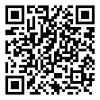產品中心
相關產品
標記一抗
英文名稱Anti-ALG11/FITC
中文名稱:FITC標記的天門冬酰胺連接糖基化11抗體
別 名Asparagine-linked glycosylation protein 11 homolog; AI849156; alg11; ALG11_HUMAN; Asparagine-linked glycosylation 11; Asparagine-linked glycosylation 11, alpha-1,2-mannosyltransferase homolog (yeast); GT8; UTP14C.
規(guī)格:100ul
說 明 書100ul
研究領域細胞生物 免疫學
抗體來源Rabbit
克隆類型Polyclonal
交叉反應 Human, Mouse, Rat, Dog, Horse,
產品應用IF=1:50-200
not yet tested in other applications.
optimal dilutions/concentrations should be determined by the end user.
分 子 量56kDa
細胞定位細胞膜
性 狀Lyophilized or Liquid
濃 度1mg/ml
免 疫 原KLH conjugated synthetic peptide derived from human ALG11
亞 型IgG
純化方法affinity purified by Protein A
儲 存 液0.01M TBS(pH7.4) with 1% BSA, 0.03% Proclin300 and 50% Glycerol.
保存條件Store at -20 °C for one year. Avoid repeated freeze/thaw cycles. The lyophilized antibody is stable at room temperature for at least one month and for greater than a year when kept at -20°C. When reconstituted in sterile pH 7.4 0.01M PBS or diluent of antibody the antibody is stable for at least two weeks at 2-4 °C.
產品介紹background:
Mannosyltransferase involved in the last steps of the synthesis of Man5GlcNAc(2)-PP-dolichol core oligosaccharide on the cytoplasmic face of the endoplasmic reticulum. Catalyzes the addition of the 4th and 5th mannose residues to the dolichol-linked oligosaccharide chain.
Involvement in disease:Defects in ALG11 are the cause of congenital disorder of glycosylation type 1P (CDG1P). A multisystem disorder caused by a defect in glycoprotein biosynthesis and characterized by under-glycosylated serum glycoproteins. Congenital disorders of glycosylation result in a wide variety of clinical features, such as defects in the nervous system development, psychomotor retardation, dysmorphic features, hypotonia, coagulation disorders, and immunodeficiency. The broad spectrum of features reflects the critical role of N-glycoproteins during embryonic development, differentiation, and maintenance of cell functions.
Function:
Mannosyltransferase involved in the last steps of the synthesis of Man5GlcNAc(2)-PP-dolichol core oligosaccharide on the cytoplasmic face of the endoplasmic reticulum. Catalyzes the addition of the 4th and 5th mannose residues to the dolichol-linked oligosaccharide chain.
Subcellular Location:
Endoplasmic reticulum. Endoplasmic reticulum membrane; Multi-pass membrane protein (Probable).
DISEASE:
Defects in ALG11 are the cause of congenital disorder of glycosylation type 1P (CDG1P) [MIM:613661]. A multisystem disorder caused by a defect in glycoprotein biosynthesis and characterized by under-glycosylated serum glycoproteins. Congenital disorders of glycosylation result in a wide variety of clinical features, such as defects in the nervous system development, psychomotor retardation, dysmorphic features, hypotonia, coagulation disorders, and immunodeficiency. The broad spectrum of features reflects the critical role of N-glycoproteins during embryonic development, differentiation, and maintenance of cell functions.
Similarity:
Belongs to the glycosyltransferase group 1 family. Glycosyltransferase 4 subfamily.
中文名稱:FITC標記的天門冬酰胺連接糖基化11抗體
別 名Asparagine-linked glycosylation protein 11 homolog; AI849156; alg11; ALG11_HUMAN; Asparagine-linked glycosylation 11; Asparagine-linked glycosylation 11, alpha-1,2-mannosyltransferase homolog (yeast); GT8; UTP14C.
詳細介紹:
規(guī)格:100ul
說 明 書100ul
研究領域細胞生物 免疫學
抗體來源Rabbit
克隆類型Polyclonal
交叉反應 Human, Mouse, Rat, Dog, Horse,
產品應用IF=1:50-200
not yet tested in other applications.
optimal dilutions/concentrations should be determined by the end user.
分 子 量56kDa
細胞定位細胞膜
性 狀Lyophilized or Liquid
濃 度1mg/ml
免 疫 原KLH conjugated synthetic peptide derived from human ALG11
亞 型IgG
純化方法affinity purified by Protein A
儲 存 液0.01M TBS(pH7.4) with 1% BSA, 0.03% Proclin300 and 50% Glycerol.
保存條件Store at -20 °C for one year. Avoid repeated freeze/thaw cycles. The lyophilized antibody is stable at room temperature for at least one month and for greater than a year when kept at -20°C. When reconstituted in sterile pH 7.4 0.01M PBS or diluent of antibody the antibody is stable for at least two weeks at 2-4 °C.
相關資料:
產品介紹background:
Mannosyltransferase involved in the last steps of the synthesis of Man5GlcNAc(2)-PP-dolichol core oligosaccharide on the cytoplasmic face of the endoplasmic reticulum. Catalyzes the addition of the 4th and 5th mannose residues to the dolichol-linked oligosaccharide chain.
Involvement in disease:Defects in ALG11 are the cause of congenital disorder of glycosylation type 1P (CDG1P). A multisystem disorder caused by a defect in glycoprotein biosynthesis and characterized by under-glycosylated serum glycoproteins. Congenital disorders of glycosylation result in a wide variety of clinical features, such as defects in the nervous system development, psychomotor retardation, dysmorphic features, hypotonia, coagulation disorders, and immunodeficiency. The broad spectrum of features reflects the critical role of N-glycoproteins during embryonic development, differentiation, and maintenance of cell functions.
Function:
Mannosyltransferase involved in the last steps of the synthesis of Man5GlcNAc(2)-PP-dolichol core oligosaccharide on the cytoplasmic face of the endoplasmic reticulum. Catalyzes the addition of the 4th and 5th mannose residues to the dolichol-linked oligosaccharide chain.
Subcellular Location:
Endoplasmic reticulum. Endoplasmic reticulum membrane; Multi-pass membrane protein (Probable).
DISEASE:
Defects in ALG11 are the cause of congenital disorder of glycosylation type 1P (CDG1P) [MIM:613661]. A multisystem disorder caused by a defect in glycoprotein biosynthesis and characterized by under-glycosylated serum glycoproteins. Congenital disorders of glycosylation result in a wide variety of clinical features, such as defects in the nervous system development, psychomotor retardation, dysmorphic features, hypotonia, coagulation disorders, and immunodeficiency. The broad spectrum of features reflects the critical role of N-glycoproteins during embryonic development, differentiation, and maintenance of cell functions.
Similarity:
Belongs to the glycosyltransferase group 1 family. Glycosyltransferase 4 subfamily.

